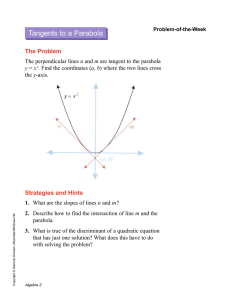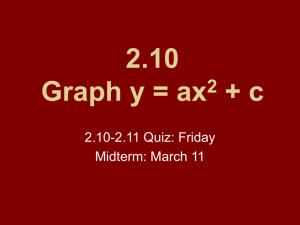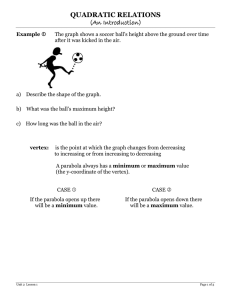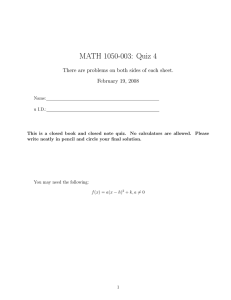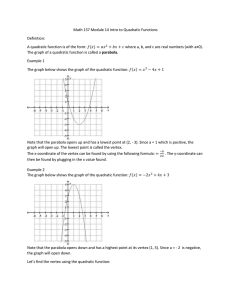7-1: Analyzing a Quadratic Function
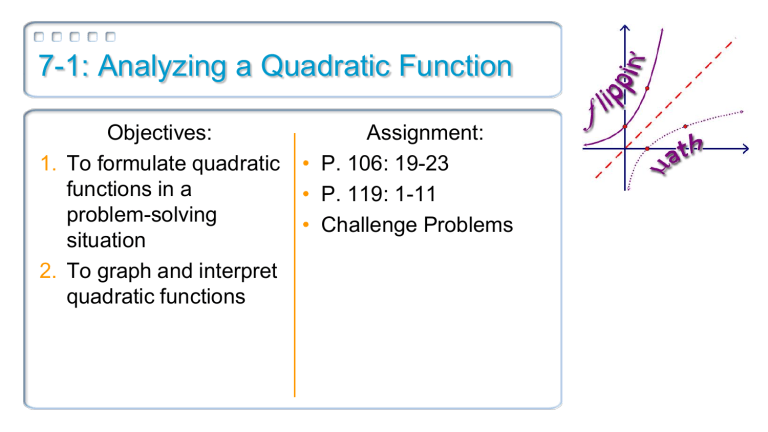
7-1: Analyzing a Quadratic Function
Objectives:
1.
To formulate quadratic functions in a problem-solving situation
2.
To graph and interpret quadratic functions
Assignment:
• P. 106: 19-23
• P. 119: 1-11
• Challenge Problems
Objective 1
You will be able to formulate quadratic functions in a problem-solving situation
Objective 2
You will be able to graph and interpret quadratic functions
Investigation
1.
On a piece of patty paper, use a ruler to draw
𝐴𝐵 .
Investigation
2.
Now fold the piece of paper so that point A lies coincides with (lies directly on top of) point B.
Investigation
3.
Unfold the paper and label point M where the crease intersects the segment. This crease is called the perpendicular bisector .
Parabola Parts
The graph of a quadratic function is a U-shape called a parabola .
The x -intercepts are the points where the parabola intersects the x -axis
Parabola Parts
The graph of a quadratic function is a U-shape called a parabola .
Fold your parabola to create the perpendicular bisector of the segment connecting the two x intercepts
Parabola Parts
The graph of a quadratic function is a U-shape called a parabola .
This fold line is called the axis of symmetry
Parabola Parts
The graph of a quadratic function is a U-shape called a parabola .
Notice that the axis of symmetry passes through the vertex of the parabola
Standard Form
A quadratic function in standard form is written y = ax 2 + bx + c , a ≠ 0.
a , b , and c are considered parameters
The graph is a parabola
Parent Function: 𝑦 = 𝑥 2
Standard Form
A quadratic function in standard form is written y = ax 2 + bx + c , a ≠ 0.
Vertex: The turning point of the parabola; marks the highest or lowest point
Vertex
Minimum and Maximum
The vertex of a parabola determines the minimum or maximum value for the function.
Standard Form
A quadratic function in standard form is written y = ax 2 + bx + c , a ≠ 0.
Axis of Symmetry: Line through the vertex that divides the parabola into 2 mirror images
Exercise 1
1.
What is the domain for any quadratic function?
2.
Explain how the vertex of a parabola affects the range of the function.
Exercise 2
If the vertex of a parabolic function is ( h , k ), what is the equation of the axis of symmetry?
Exercise 3
Let’s say the vertex of a parabola is (2, -2).
If the y -intercept of the parabola is (0, 6), what other point must lie on the parabola
7-1: Analyzing a Quadratic Function
Objectives:
1.
To formulate quadratic functions in a problem-solving situation
2.
To graph and interpret quadratic functions
Assignment:
• P. 106: 19-23
• P. 119: 1-11
• Challenge Problems
